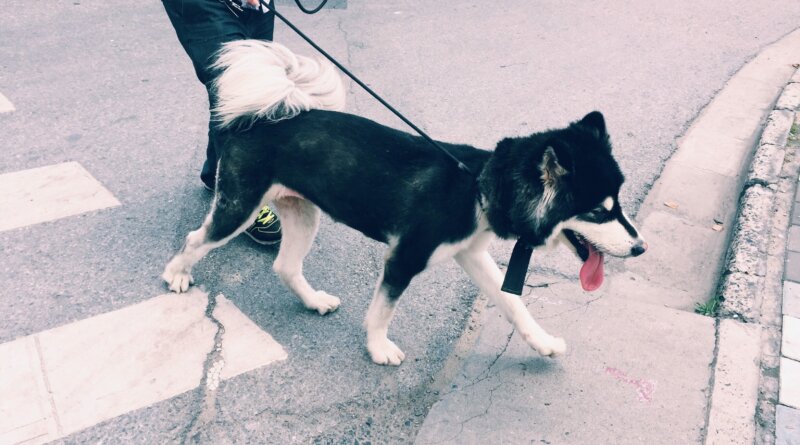Helping Your Dog Be Social On The Walk
Cesar’s fulfillment formula is Exercise, Discipline, and then Affection, in that order — and the best way to provide exercise is to walk your dog.
But one of the areas in which people seem to report the most trouble is … walking their dogs. Their dogs pull ahead, or act aggressively toward other dogs, or bark or snarl at everything. When you experience this type of behavior, it can really be a big disincentive to walking, which just makes things worse.
If you don’t walk your dog, it’s not getting exercise, so it isn’t balanced. It’s missing out on the most important half of the fulfillment formula and will be full of excess energy. A dog with excess energy cannot focus on discipline, while showing affection toward an over-excited dog will just make it worse.
So, what to do? The key thing to remember is this: the energy you bring with you affects the walk. That leash you’re holding in your hand is a direct communication system to your dog, and everything you feel just gets telegraphed down it. Are you anxious? Tense? Nervous? Excited?
If you’re in a negative energy state, your dog is going to pick up on that immediately and act appropriately. Why? Because they are looking to you for cues on how to behave, for example, if you see another dog approaching and tense up on the leash, your dog is going to understand this as, “Uh-oh. Something is dangerous. Must protect!”
So, instead of passing that other dog without incident or with a properly socialized greeting, your dog is going to react to the threat, probably with aggression. This leads to that awkward situation we’ve all faced of pulling our dog away, apologizing profusely, and then dragging our dog past the other dog and owner, a good walk ruined.
Remember: dogs live in the moment. The dog they had a fight with yesterday can be their best friend today because they don’t hold grudges. The problem is that humans do hold onto the past, so the dog our dog once got into a scuffle with is forever the enemy — to us.
But that’s the human way of looking at things. If you want to have a pleasant walk with your dog, you need to do two things. The first is to make sure that your dog is in a calm-submissive state before the walk even starts. To do this, you need to teach your dogs that they do not get to go on the walk until they are calm-submissive. In order to do that, you have to be patient and consistent, and not put the leashes on until your dogs calmly sit and wait.
The second is to check what energy you are bringing on the walk, and put yourself in a calm-assertive state before you walk out the door. Here are some things to avoid:
- Don’t anticipate the worst
Expectation can become reality, so if you head out the door worried that something bad might happen on the walk, you’ve already set the scene for bad things to happen. Before you go out that door, visualize a pleasant stroll with your dog at your side. - Don’t avoid other people
We’ve probably all seen or done this: when one dog walker sees another coming down the street, they suddenly pull their dog aside and drag them across the street in a panic. All this does is alert the dog to danger, and if their human does this a few times then the dog will make the association with other dogs and danger. Again, expectation becomes reality. - Don’t panic
When you see or encounter other dogs on the walk, remain calm. If you’re calm, then your dog is calm — and the other dog will sense this. Maybe they’ll just walk right by each other, or maybe they’ll exchange a friendly greeting. Even if the other dog does become over-excited or aggressive, your calm-assertive energy will tell your dog that this is nothing to be worried about, and it will be much easier to steer your dog clear. - Don’t pull
If your dog does start to bark at another dog, do not pull back on the leash. To a dog, this sudden tension actually makes them pull and lunge harder. Learn how to give a correction by giving the leash a quick tug to the side or by pulling up instead of back. When you’re working to train your dog to not pull, it’s perfectly fine to use your body to block them by giving them a nudge with your leg or standing in front of them.
- Don’t yell
If your dog does become over-excited or aggressive on the walk, resist the natural human urge to control them by shouting. This only makes them more excited or aggressive because, by that point, they aren’t hearing the words, they’re just sensing loud noise and your own excited energy. Dogs mirror our energy state, so if you want your dog to calm down, stay calm yourself.
Got tips of your own? Share them with us. How do you ensure your dog is a social butterfly on the walk?




